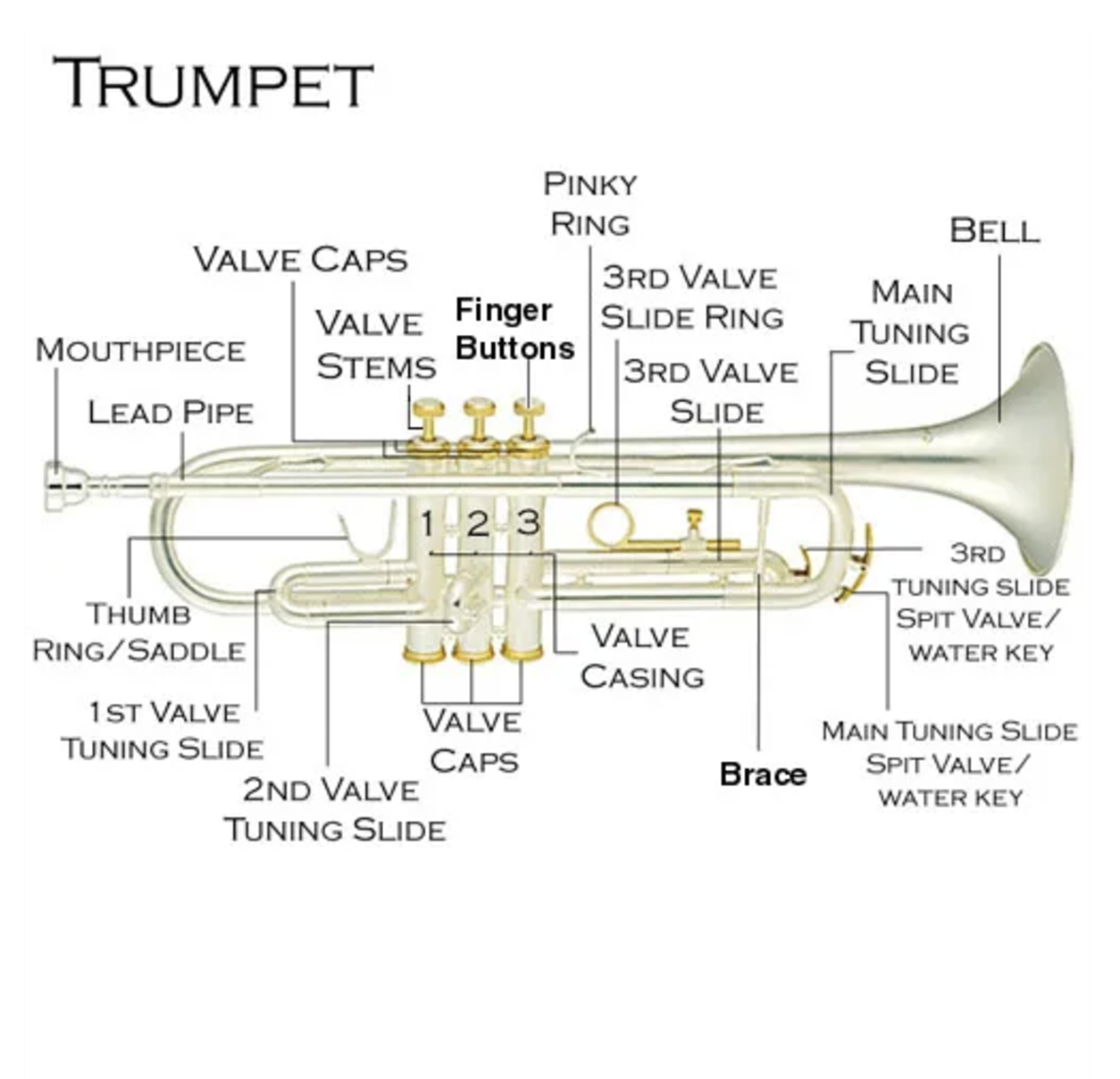Essential Question: What is a trumpet?
The trumpet is a brass instrument known for its bright, powerful sound and versatility in a wide range of musical genres, including classical, jazz, pop, and marching band music. Its design consists of a long, narrow, cylindrical brass tube that is coiled into a compact shape. Here are the key components of the trumpet:
Video clip of trumpet lesson: taken by course instructor with permission of the participants.
Physical Features:
Mouthpiece:
A small, detachable cup-shaped component where the player buzzes their lips to produce sound.
Mouthpieces come in various sizes to suit different playing styles and preferences.
Leadpipe:
The tube leading from the mouthpiece into the main body of the trumpet.
Valves:
Typically three piston valves that the player presses to alter the length of the tubing, thereby changing the pitch.
Advanced trumpets may have additional tuning slides or rotary valves for more specialized uses.
Bell:
The flared end of the trumpet that projects and amplifies the sound.
It gives the trumpet its characteristic brilliance and resonance.
Slides:
Adjustable tubing used to fine-tune the pitch.
The first and third valve slides are often adjusted during performance for precise intonation.
Range:
The trumpet has a wide range, typically from F# below middle C to about 2.5 octaves above it, though skilled players can extend this range.
Sound Production:
Sound is created when the player buzzes their lips into the mouthpiece, producing vibrations that travel through the tubing.
The valves and the player's embouchure (lip shape and tension) determine the notes.
Types of Trumpets:
Bb Trumpet (most common): Standard for orchestras, bands, and solo work.
C Trumpet: Commonly used in orchestras for its slightly brighter tone.
Piccolo Trumpet: Smaller and higher-pitched, often used for baroque and high-register playing.
Eb/D Trumpet: Used for specific classical works requiring agility and a bright sound.
Flugelhorn: Similar to a trumpet but with a softer, mellower tone.
Trumpet Mouthpiece Position
Typical trumpet mouthpiece placement is 50% on the top lip and 50% on the bottom lip.
Push the jaw slightly forward so the teeth are lined up on top of each other
Open the teeth lightly
Form a “brass face” to create the embouchure with a small opening in the center of the lips (aperture)
Blow air through the aperture to start the buzz


